In the province of Grosseto, in the green Maremma, Sorano is a small village built on top of a tuff cliff. This village, along with other picturesque medieval towns built into the tuff, preserves essential evidence of the Etruscan civilisation.
Strolling through its alleys, one breathes history, among ancient buildings and the mysterious Etruscan hollow streets. History and archaeology merge with the surrounding landscape that, with its verdant valleys and lush vegetation, offers splendid views. Let's take a trip to this corner of Tuscany and discover what to do and see in and around Sorano!

Sorano: an ancient Etruscan village in the Tuscan Maremma

The definition that best describes Sorano and its territory is that of a "great open-air museum": a historical-archaeological and environmental museum.
We are located in the southernmost part of Tuscany, on the border with Lazio, in the so-called Terra dei Tufi, an area characterised by tuffaceous rocks, vegetation, and deep valleys crossed by numerous streams. In this natural setting, carved into the tuff, live Sorano and the hamlets of Sovana and Vitozza, medieval villages rich in history and tradition.
The territory is rich in archaeological areas such as the vast necropolis of the ancient Etruscan city of Sovana, with the monumental tombs "Pola" and "Ildebranda". The necropolises can be reached via the Vie Cave, deep paths carved into the tuff and immersed in the vegetation of the Tuscan Maremma.
The Vie Cave (hollow streets) is a constant presence in this territory, contributing to its unique character. In ancient times, these steep paths served as communication routes in a rugged and impervious territory. In addition to its archaeological significance, the Vie cave also holds environmental importance, as a microclimate is created within these paths that favours the growth of plants typical of damp and shady environments.
Today, routes and itineraries have developed along the hollow ways, which can be traversed on foot or by mountain bike, making them ideal for those who want to discover the area slowly and sustainably. Among the most evocative routes is the path along the Lente valley that leads from San Rocco to the ancient village of Vitozza.
These are rock settlements that, together with the Etruscan Necropolis of Sovana, are part of the Archaeological Park “Città del Tufo”.
Sorano and its territory also boast the presence of historical buildings, churches and monuments of value, as well as two important museums: the Archaeological Civic Museum, inside the 14th-century Sorano Fortress, and the Museum of San Mamiliano in Sovana.
Throughout the year, cultural events, festivals and traditional celebrations take place in Sorano and its surroundings, allowing you to get to know the local traditions of these small villages far from the hustle and bustle of modern society.
Finally, a trip to Sorano will lead you to discover the delicious local cuisine, comprising traditional dishes prepared with the excellence of the territory, including legumes, cheeses, cold cuts, honey, and the famous Tuscan wine. You can enjoy all this in the agritourism, restaurants and wine bars scattered throughout the territory.
Let's discover together the attractions of the Sorano area!
Sorano: a walk through the historic centre
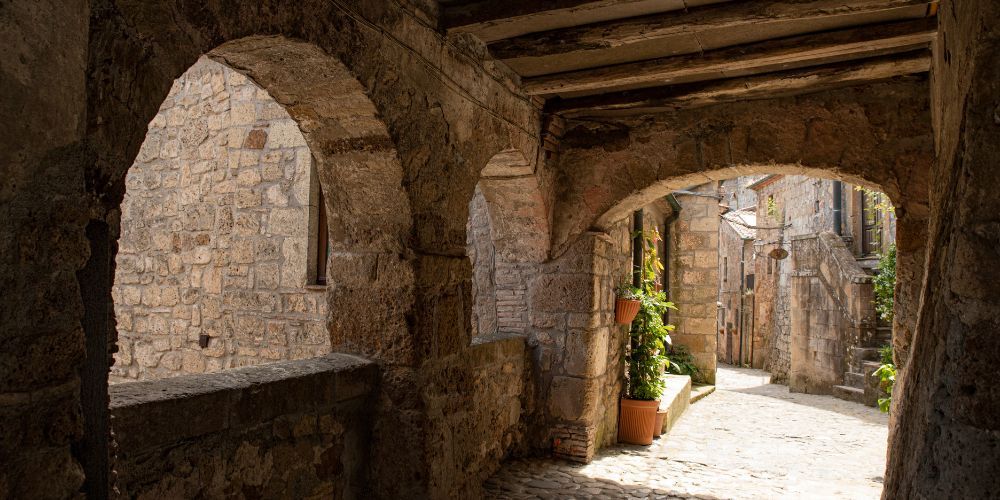
A walk through the historical centre of Sorano will be a short trip out of time. You will find yourself in a distinctive natural environment, where the tuff walls of the fortress and houses are surrounded by centuries-old trees. The historical centre of Sorano has been awarded the Orange Flag by the Italian Touring Club. This recognition is awarded to small inland localities that distinguish themselves by offering exceptional and high-quality hospitality.
The village is dominated by the mighty Orsini Fortress, a medieval architectural building that bears witness to centuries of history. Strolling through the village's narrow streets, you reach the Masso Leopoldino, which offers splendid views of the surrounding valley. Exploring the historic centre, you will find yourself walking through what was once the old Jewish ghetto, a testimony to the Jewish community that lived here.
Among the tuff houses, you will admire the recently restored ancient Synagogue and the Forno delle Azzime, used by the Jewish community to make a special, unleavened bread.
The entire historic centre of Sorano is a mix of history and beauty.
What to see in Sorano: the Orsini Fortress
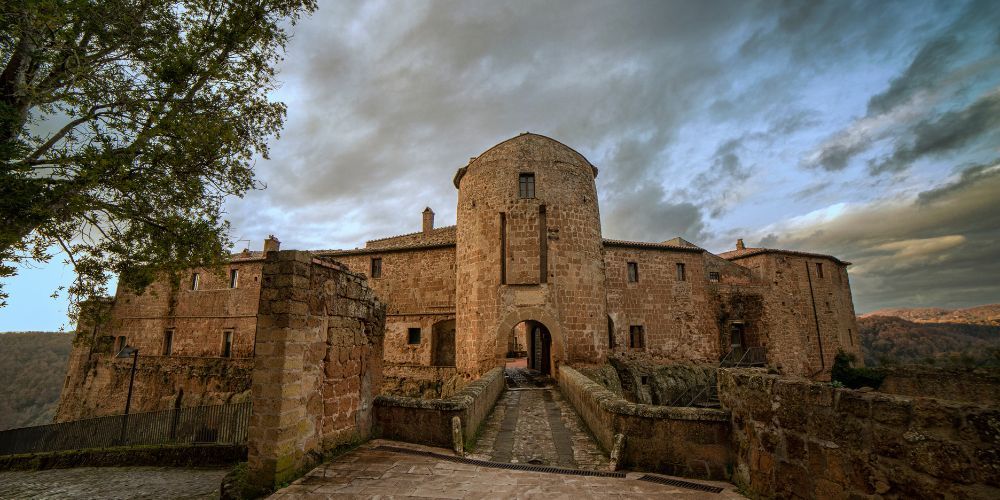
The village of Sorano is dominated by the majestic Orsini Fortress, a grandiose example of military architecture.
Built in the 12th century by the Aldobrandeschi, it passed to the Orsini family in 1293. It was the Orsini family who renovated and extended it, making it a masterpiece of defensive architecture. Even today, above the entrance portal, we can see the coat of arms with the Orsini and Aldobrandeschi insignia.
From the outside, we can see the grandeur of this building. Still, it is when we enter that we truly appreciate its grandeur, as it unfolds in depth over five underground floors. This structure was equipped with a mill and cisterns for collecting rainwater.
It was totally self-sufficient and could hold all the inhabitants of the village. The Orsini Fortress never fell under enemy assault and withstood the various sieges that followed over the years. In 1454, Sigismondo Pandolfo Malatesta, with a command of over twelve thousand men, attempted to conquer it three times but failed.
The Archaeological Museum
The Orsini Fortress is open to the public and houses the Archeological museum. The Museum houses artefacts from the Middle Ages that were found in the buttes of Sorano, Sovana, Castell'Ottieri and Vitozza. These are primarily ceramic objects, including everyday pottery, dating from the mid-16th to the late 18th century.
The last three rooms of the Museum are dedicated to the Ricci Busatti collection, donated to the Soprintendenza ai Beni Archeologici della Toscana in 2010 by the heirs of Paola Ricci Busatti.
The collection includes artefacts that can be generically dated to the second half of the 6th century BC, most of which come from excavations carried out in the 1950s along the Calesine ditch.
In addition, visitors can access the various levels of the underground walkways, the donjon, the ramparts and the other areas of the fortress.
During restoration work in the 1960s, frescoes by an artist of the Sienese school, painted between 1580 and 1585, with floral motifs, mythological scenes and the score of a 16th-century musical composition by Domenico Maria Ferrabosco, were found in a small room of the octagonal tower, which appears to have been the study of Niccolò IV Orsini.
The Orsini Fortress and the Archeological Museum are cultural attractions not to be missed in Sorano.
The Leopoldine Rock
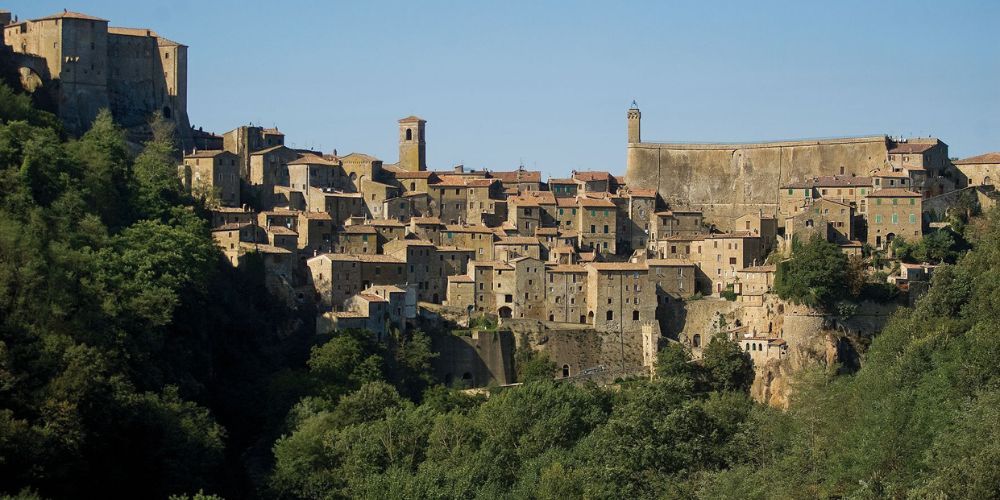
The Masso Leopoldino is one of the most characteristic elements of Sorano and an excellent example of the integration of nature and architecture.
The Masso, which stands in the centre of the village, was a fortified citadel for the defence of the town below throughout the Middle Ages. In 1801, large blocks of tuff broke away from the boulder and destroyed part of the village below.
Between 1820 and 1822, Grand Duke Ferdinand III of Lorraine provided for the reconstruction and construction of a huge terrace on which the crenellated tower with bell and clock was erected.
The work was completed by Grand Duke Leopold II, from whom the Masso takes its name.
Today, on top of the Masso is a splendid panoramic terrace accessible by a steep flight of stairs. Once you reach the terrace, enjoy the magnificent views of Sorano and the surrounding valley.
Relaxation and wellness: the thermal baths of Sorano
Just a few minutes' drive from Sorano, we find a splendid place for relaxation and well-being: the thermal baths of Sorano.
The presence of thermal water in this area was already known in the Middle Ages, when the church of Santa Maria dell'Aquila was built over one of the springs at the behest of the Aldobrandeschi family.
The springs of the thermal baths of Sorano gush out at springs located along a stream, and were used by the most important families of the area, the Aldobrandeschi and the Orsini. They were then abandoned for many years until, in the 2000s, work began to restore the springs and the ancient church, as well as to build a thermal establishment.
The thermal establishment has a large pool built on two levels. Part of the pool is covered, allowing it to be used even in the cold seasons. The pool is situated amidst a large English-style lawn with a 3,000 m² solarium. Inside, it features comfortable seating for thermal hydro-massages and waterfalls for cervical and lumbar hydro-massages.
In a wooded area adjacent to the establishment, a smaller pool can be accessed via a path through the greenery. This is a historical pool called "the friars' bath" because it was used by the friars who lived in the church of Santa Maria dell'Aquila.
There are also two swimming pools for children and a sports pool where you can exercise while enjoying the benefits of the thermal water. The thermal waters gush out at a temperature of approximately 37.4 degrees.
On a trip to the Maremma, the thermal baths of Sorano are an unmissable stop for an experience of pure relaxation for body and mind.
The Città del Tufo archaeological park and the vie Cave
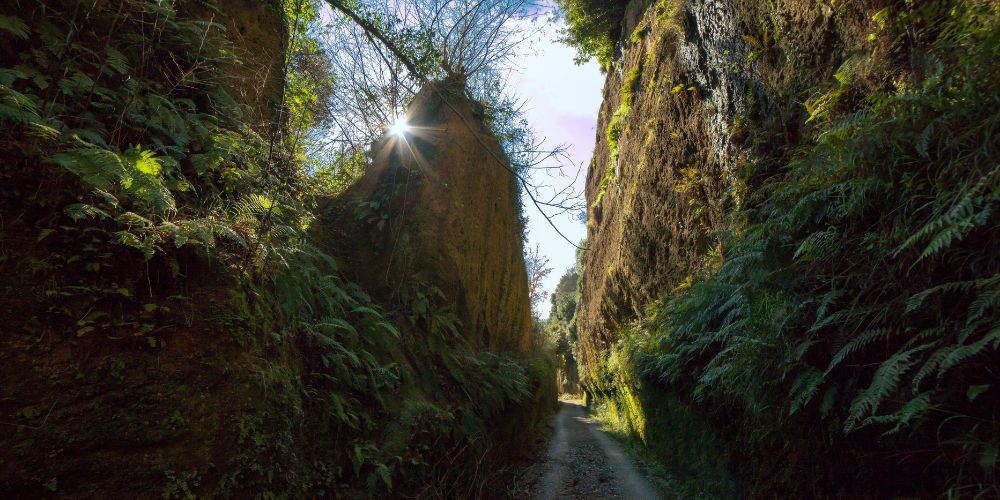
The Città del Tufo Archaeological Park spans an area of approximately 60 hectares and encompasses three areas of great archaeological, historical, natural, and scenic value: the Etruscan necropolis of Sovana, the rupestrian settlement of San Rocco, and the rupestrian settlement of Vitozza. The most significant testimonies pertain to the Etruscan necropolis situated on the hills surrounding the ancient village of Sovana.
The park also preserves numerous testimonies of the late antique and medieval periods, including churches, castles, rock dwellings, and fortifications.
One of the characteristic features of the Città del Tufo archaeological park is the hollow cave roads. These open-air roads, dug into the tuff, were built by the Etruscans without the aid of mechanical means, taking advantage of the fact that when the tuff is wet, it is easily worked.
The Vie Cave, with its steep walls on either side of the road, led to the discovery of Etruscan necropolises and is also part of an ancient road system that connected the various localities in the area.
Walking along the Via Cave is an evocative experience that showcases the rich history and natural beauty of these places.
The Sovana Necropolis
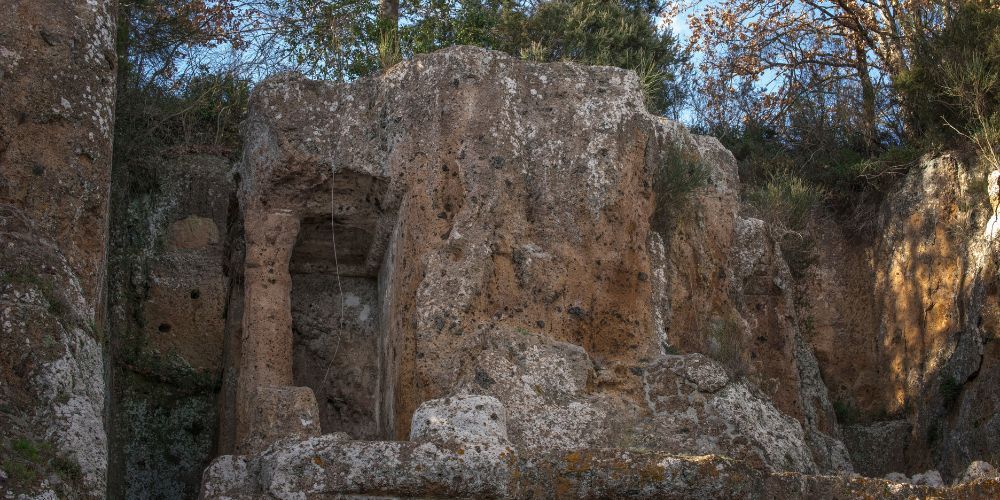
the Ildebranda Tomb
The entrance to the necropolis is about 1 km from the village of Sovana.
The paths, immersed in lush vegetation, lead to extraordinary rocky funerary architecture: the monumental tombs with columned fronts such as the Ildebranda Tomb and the Pola Tomb, the aedicule tombs of the Winged Demons and the Typhon, and the magical hollow ways.
The Ildebranda Tomb, dating back to the 3rd-2nd century BC, is the most famous monument in the Sovanese necropolis and among the most important in the whole of Etruria. Etruscan decorative art loved bright colours, and initially the tomb was covered with polychrome stuccoes. Today, many of the stuccoes have been lost, but the tomb retains great charm.
About 400 metres from the Ildebranda tomb, we find the Pola tomb, dating back to the 3rd century BC. This temple tomb originally featured eight columns on a podium. Only one column remains today, and beneath the temple is a fifteen-metre corridor leading into a cruciform burial chamber.
The tomb of the Winged Demons and the tomb of the Typhon
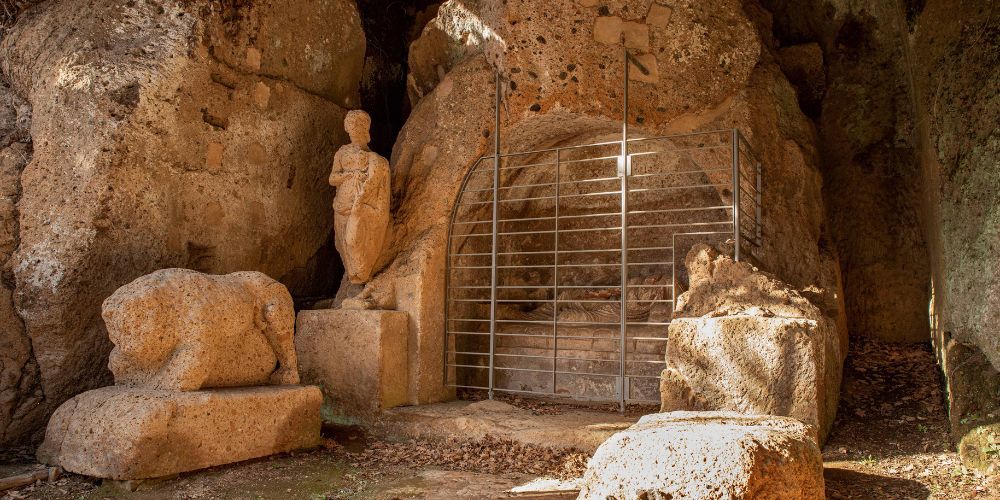
The tomb of the Winged Demons
The tomb of the Winged Demons, dating from the 3rd century BC, is characterised by delicate sculptural decorations, including those of winged demons, from which it takes its name. It is an aedicule tomb, with an inner niche carved into the tufa, where a statue of the deceased is visible. It is in such an excellent state of preservation that to this day we can still see the colours of the decoration.
The tomb of Typhon, dating back to the 4th century BC, also takes its name from the decoration on the tympanum of the aedicula structure. In the lower part of the tomb, another polychrome stucco decoration is visible, although it is partially preserved.
In the second sector of the necropolis, the tomb of the Siren, another aedicula tomb with decorations, and the striking and walkable Via Cava di San Sebastiano are visible.
The cave settlements of San Rocco and Vitozza
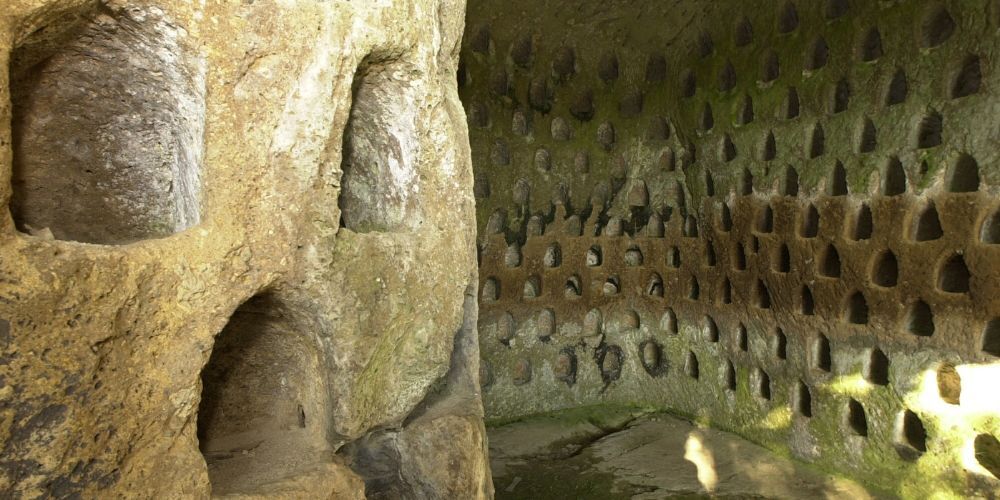
The journey through the history of this area continues with the rock settlement of San Rocco, located on Provincial Road 22, about 2 km from Sorano. At the entrance we find the small church dedicated to San Rocco, built by the Soranesi between the late 15th and early 16th century. Continuing along the path, we reach a huge panoramic terrace surrounded by greenery.
From here, there is a splendid view of the village of Sorano and the surrounding valleys. Behind the small church of San Rocco, a path begins that leads to the Via Cava di San Rocco. The suggestive path descends into the valley of the Lente River and, in about 20 minutes, leads to what was once the ancient entrance to the village of Sorano, the Porta dei Merli, at the foot of the Masso Leopoldino.
The visit to the park is completed with a stop at the area of Vitozza, one of the most important medieval rock settlements in Italy.
This settlement already existed in the 12th century, but due to numerous depredations and wars, it was abandoned around the 15th century. Walking along the main road, one can see the remains of fortifications, churches and numerous caves that were used as stables, dwellings and workplaces.
The more adventurous can venture into the woods and reach the source of the Lente River via a rather steep and rugged path.
The Città del Tufo archaeological park offers a unique experience for discovering the heart of this territory.
The hamlet of Sovana and its attractions
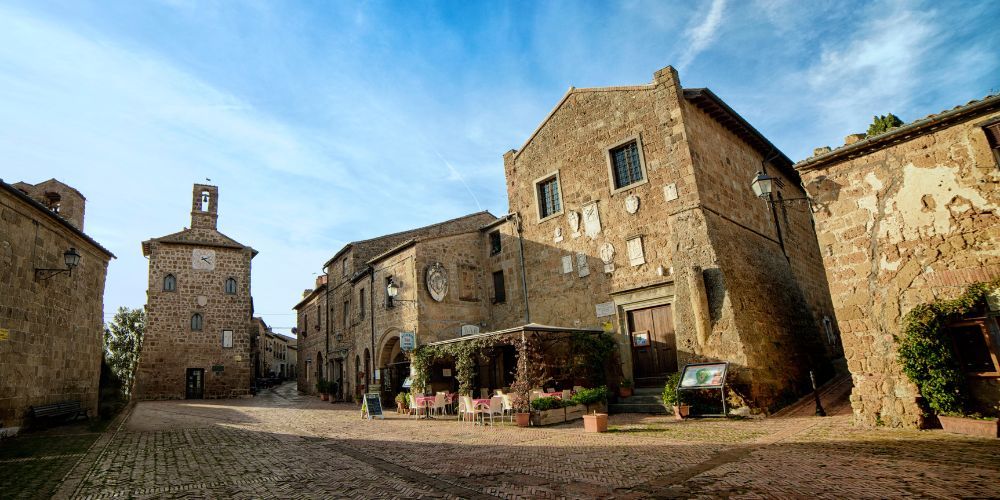
Piazza Pretorio - Sovana
Situated in an isolated location, Sovana has just under 500 inhabitants, and its historic centre, although small, boasts some interesting cultural attractions.
In the village's main square, Piazza del Pretorio, we find several buildings of historical and cultural importance.
First and foremost, we mention the Palazzo Pretorio, an ancient medieval building that now houses the Museum of Saint Gregory VII and serves as the visitor center of the Tufo Archaeological Park. The palace stands out for its beautiful façade adorned with the coats of arms of the families who ruled Sovana over the centuries. The palace is noted for its beautiful façade with the coats of arms of the families that governed Sovana over the centuries.
The Bourbon del Monte palace, the churches of San Mamiliano and Santa Maria Maggiore, and the Palazzo dell'Archivio are also located in this square. Palazzo Bourbon is a 16th-century building with a portico and arcades. The building, which was once the home of a bishop of the Bourbon family, is now private.
The Church of Santa Maria Maggiore dates back to the 12th century but underwent modifications in the 16th century; today, it is characterised by the combination of both Romanesque and Gothic elements. Inside, on the wall of the right aisle, there are valuable frescoes. In addition, the stone ciborium in the apse is one of the few examples of pre-Romanesque art in Tuscany.
The Palazzo dell'Archivio, the Church of San Mamiliano and the Cathedral
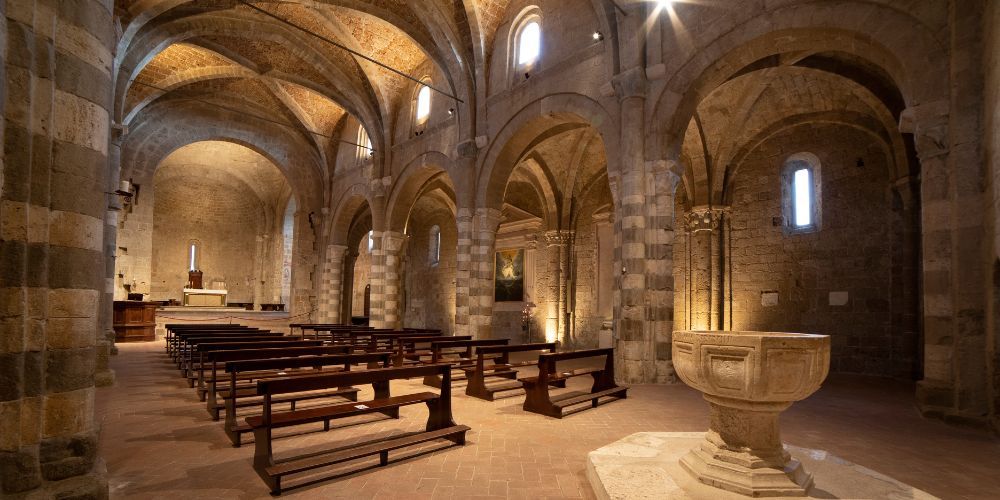
the Cathedral - Sovana
The Palazzo dell'Archivio, with its iconic shape and small bell tower, is the most photographed building in Sovana. Dating back to the 12th century, it underwent modifications in subsequent centuries and was abandoned mainly between the 19th and 20th centuries. Thanks to recent restoration work, we can now admire it in all its beauty.
The church of San Mamiliano is the oldest building of worship in Sovana. Built in Romanesque style, it dates back to the 6th century. With the latest restoration work, the church has been transformed into an important museum, the Museo di San Mamiliano.
Finally, at the eastern end of the town, we have the Cathedral of Sovana, an ancient church dating back to the 8th century, which has undergone several renovations over time, including the addition of new decorative elements, such as the tufa stone crypt.
Far from the circuits of mass tourism, Sovana is a gem of the Tuscan Maremma waiting to be discovered!
The Museum of San Mamiliano
The San Mamiliano Museum, together with the Palazzo Pretorio and the Palazzo dell'Archivio, forms the Sovana Museum Centre.
Inaugurated in 2012, the Museum preserves evidence from various historical periods. Archaeological excavations have revealed a Roman baths facility, a crypt, and numerous medieval and Renaissance tombs, as well as an exceptional late antique coin treasure dating back to the 5th century AD.
The Museum of San Mamiliano was conceived as the city's archaeological museum, and its layout is constantly changing.
In addition to exhibiting archaeological artefacts from the Roman phase of the city and some coins from the treasury, the museum also houses important ceramic artefacts found in the sacred area, known as Il Cavone.
In addition, at the Museum of San Mamiliano, we can also admire objects related to Lombard culture, dating back to the second half of the 7th century AD, which were found in a stratified cemetery. These finds are of exceptional importance because they testify to the Longobard presence, about which little was known from written sources.
Lastly, also of great interest are the two Plumbbe statuettes, dating back to the 3rd century BC, an example of magical practice, and the symposiaco trousseau—a set of objects used to set up a banquet in ancient Greece and Etruscan civilisation—found near the Ildebranda tomb.
A visit to the San Mamiliano Museum will be a journey through the ancient history of Sovana.
Slow tourism: walking and cycling routes in and around Sorano
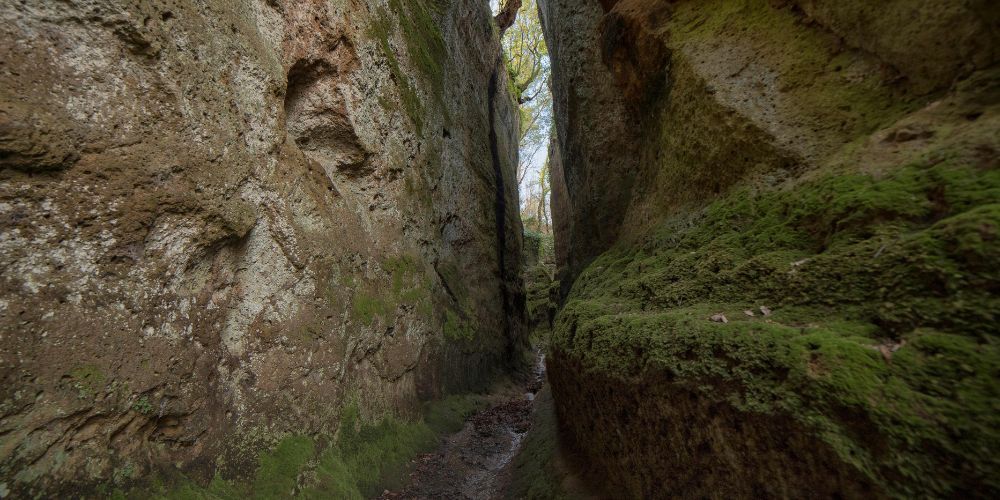
The vie Cave are sacred paths and communication routes carved into the tuff by the Etruscans.
Walking in these "canyons" is a suggestive and sensorial experience. The gaze stops on the high tuff walls and the colours of the vegetation and rocks. The smells and sounds change according to the season and time of day: at dawn we breathe in the scent of medicinal herbs, at dusk we hear the song of the owl, and at night that of the tawny owl.
An experience that makes this corner of the Maremma unique is exploring the paths of the Via Cave.
Below, we present some of the historical and naturalistic routes that will lead you to discover the treasures of this area.
Itinerary Sorano-Sovana
The Sorano-Sovana itinerary unites the two villages, which are carved into the tuff. From the villages clinging to small tuffaceous plateaus, one descends to the valley floor marked by the action of the rivers and then ascends through the mysterious Via Cave.
The ancient itinerary from Sovana heads towards Monte Amiata, passing through Pianetti di Sorano and Case Rocchi, where there is evidence of Etruscan civilisation such as the Necropolis of Calesine and the tombs of Castel Sereno.
Unfortunately, today, most archaeological finds are hidden by the thick vegetation that covers the valleys. Today, the small plateaus of Sorano and Sovana impress with their fascinating landscape of vineyards, olive groves and fields where animals graze freely.
Due to its diverse range of environments and stunning views, this itinerary is highly popular among trekking and mountain biking enthusiasts.
Via Cava di San Rocco
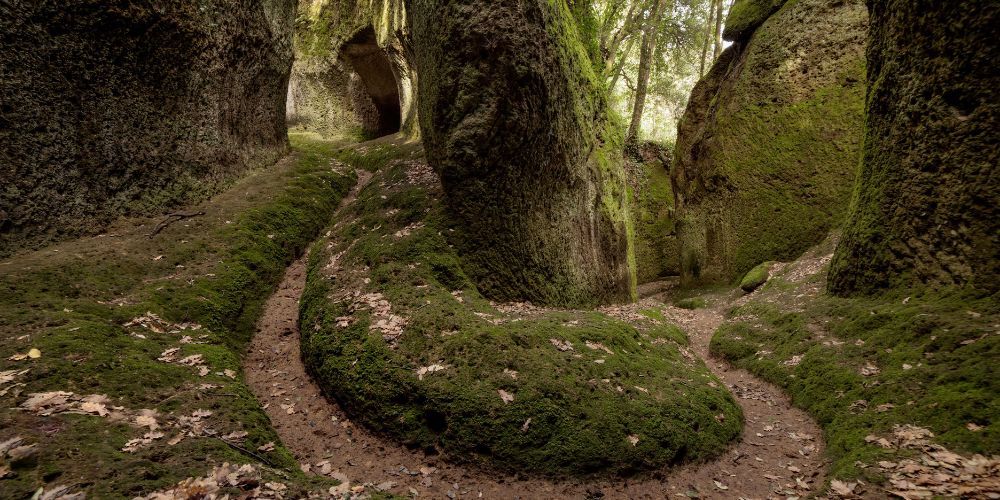
The Via Cava di San Rocco takes its name from a small church at the entrance to the small rock settlement of San Rocco. In about 40 minutes, the route leads to the ancient entrance to the village of Sorano.
Along the way, one can observe large rooms dug out of the tufa rock, which were once used as stables and are known to the local population as "the caves of San Giglio".
This name derives from the presence of a shrine that contained a depiction of the Madonna with lilies in her hand.
The presence of wayside shrines featuring images of saints at the entrance to the caves is a notable feature of this area. These sacred images, were intended to protect travellers who travelled these narrow and dark streets, especially at night.
The via cava di San Rocco is considered one of the most suggestive streets in the area due to its height and the many hairpin bends that characterise it. Along the street, there are many side outlets that, via steep stairs, lead to small plots of land where grapes were once cultivated.
The grapes were then taken by mules or donkeys to the cellars throughout the historic centre of Sorano, where they were transformed into wine.
Trekking in Sorano: the Valle del Lente

What strikes one at first sight about this area is its morphology, made up of small tuffaceous plateaus furrowed by numerous streams.
The Valle del Lente itinerary is fascinating for its numerous environmental and natural aspects.
As you walk along this itinerary, at times impervious, you will observe the forest with linden, maple, and beech trees, as well as dense vegetation where you can see traces of animals such as roe deer, wild boar, and porcupines. The Lente River is also rich in numerous fish, some of which are threatened with extinction.
This route offers a close encounter with nature, providing a pleasant sense of well-being.
In addition to its naturalistic aspects, the route features monuments of historical and archaeological value from various eras, foremost among them the ancient cave town of Vitozza.
The springs of the Lente river, with its enormous basalt waterfall and the 19th-century aqueduct, are also very impressive.
Typical products and gastronomic excellence
A trip to Sorano will lead you to discover the flavours and gastronomic excellences of the Tuscan Maremma.
In addition to the excellent olive oil and wine, products already appreciated by the ancient Etruscans, let's explore the ingredients and gastronomic excellences that make Maremma dishes so tasty!
Among the typical products of this area is Sorano saffron, a precious spice and powerful natural antioxidant that gives a special flavour to the dishes it is combined with. Saffron is excellent on pappardelle, risottos and also on "chitarrini", a fresh egg pasta, often served with clams and shellfish.
Sorano beans are another typical product worth tasting. Grown in this volcanic territory, they are white, easily digestible and have a high energy value. They are excellent ingredients for making tasty soups, such as minestrone, and for "la tosca", a typical Tuscan wheat-based pasta. They are also an excellent side dish, boiled and seasoned with salt, pepper, and extra-virgin olive oil.
Another typical product of the Maremma is truffles, particularly the tuber brumale, which is available from January to March. It is a black-skinned truffle with a delicate scent and tastes delicious on dishes.
In Sorano and the surrounding area, you will find numerous farmhouses (agriturismi) where you can sample delicious traditional dishes prepared with locally sourced products.
What are the typical dishes of Sorano?
Among the typical dishes of Sorano, as a first course, we mention the famous pici all'aglione.
Pici is a fresh, handmade pasta similar to spaghetti. According to this traditional recipe, pici are served with a sauce prepared with a whole head of garlic, extra-virgin olive oil, tomatoes, and basil. A simple dish, delicious and genuine.
In the many restaurants and agriturismi in the area, you will also find other delicious first courses such as acquacotta and tortelli maremmani.
Acquacotta is a traditional Tuscan soup, the main dish of farmers and shepherds. This soup was prepared with all the available seasonal products, including tomatoes, celery, onions, wild herbs, and cheese.
The dish could be enriched with an egg to make it more substantial or with any other available ingredient at the time. A poor, hearty dish that evokes ancient flavours.
Tortelli maremmani are a classic Sunday lunch dish. They are ravioli made from fresh pasta, filled with ricotta and spinach, and seasoned simply with butter and sage, or with a meat sauce.
Another typical dish of the Tuscan Maremma is “buglione d'agnello”, a recipe from the area's rural tradition. The dish is made with lamb meat, tomato pulp, toasted Tuscan bread and bacon. Meat lovers will certainly appreciate it!
For dessert, we recommend the Cialda dei Tufi, a crunchy sweet made of flour, sugar and aniseed, typical of the Tufi area.
These are just some of the typical dishes of Sorano and the Tuscan Maremma. All that remains is to enter an agriturismo and discover many more!
The wines of Sorano
One of the Tuscan excellences is wine.
Even in Sorano, wine production is a prestigious agricultural activity that supports the local economy. The wines produced in the Sorano area belong to the Sovana DOC denomination. They are red, rosé and white wines, known for their originality and quality.
In and around Sorano, you will find several wineries where you can taste these excellent wines and discover the characteristics of the vineyards from which they come.
Visiting the area's cellars and vineyards will be an enjoyable experience. Some cellars have spaces entirely dug into the tuff. These spaces enjoy conditions of humidity and temperature that are ideal for quality wines.
In the cellars and restaurants in and around Sorano, you can also taste Bianco di Pitigliano Doc, Maremma Toscana Doc and Toscano.
Moreover, every year in Sorano, there are traditional festivals and fairs dedicated to the excellent wines and typical products of this area.
Cultural events, festivals and traditional celebrations: the wine cellar festival
Wine cellars are a characteristic place in Sorano, one of the favourite places for the Soranesi to get together with friends!
Every year between the end of October and the beginning of November, Sorano hosts the Festa delle Cantine. This event attracts visitors and wine lovers from all over the province.
The event lasts three or four days, during which Sorano's wine cellars are open for tastings of local wine and typical products. An opportunity to discover local flavours and ancient traditions. For the entire duration of the festival, music fills the streets of the village, as well as markets and shops.
The Spring Festival
Between 25 April and 1 May, the arrival of Spring is celebrated with the Spring Festival. This event involves all citizens, especially young people.
For the occasion in Sorano's historical centre, there are exhibitions, markets selling handicrafts and local products, shows, live music, food stands featuring typical specialities, and games for children. Excursions in the area, as well as vintage car and motorbike rallies, are also planned.
The Spring Festival is a cultural event to experience Sorano and savour the flavours of the Maremma.
The Handicraft Exhibition and Olio in Festa
Anyone passing through Sorano in August will have the opportunity to participate in a fascinating exhibition showcasing local handicrafts. For more than a week, the historic centre of the village will be animated by stalls featuring a wide range of large and small objects created by local craftsmen.
The event features evening shows, entertainment for both adults and children, as well as educational activities focused on cooking and handicrafts.
An interesting and fun event to learn about local crafts and to support the local economy.
In December, instead, there is Olio in festa, the festival dedicated to another Italian and Tuscan excellence: olive oil.
During the three-day festival, you will find gastronomic stands throughout the historic centre, serving traditional Tuscan dishes dressed with locally produced Maremma olive oil. On this occasion, it will also be possible to admire the cribs set up in the village and attend musical performances.
How to get to Sorano
Sorano is located in the province of Grosseto, approximately 89 km away.
The best way to reach Sorano and its surroundings is undoubtedly by car, which provides total freedom of movement.
By car:
From the north:
- Take the A1 motorway (autostrada del sole) to the Firenze Certosa exit. Continue on the motorway link road as far as Siena Sud, continue in the direction of Rome, follow the S.S. Cassia for 70 kilometres and exit at Sorano.
- Take the A1 motorway (autostrada del sole) as far as the Chiusi/Chianciano exit. Continue to Sarteano, then Radicofani, and proceed to Rome. Continue along the S.S. Cassia in the direction of Rome, and exit at Sorano.
From the south:
- Take the Autostrada del Sole, exit at Orte and then continue on the motorway to Viterbo. Follow the exit for Siena, continue to Valentano, and then follow the signs for Pitigliano and Sorano.
By train:
Sorano and its surroundings are not served by much public transport, especially on holidays or out of season.
The nearest railway stations are Orvieto (48 km), Albinia (60 km) and Grosseto (89 km).
From Grosseto, several bus lines operate to the villages and towns in the province, including Sorano. The bus journey may involve a transfer to a different bus. It is advisable to check the timetables and bus routes in advance on Tiemme's website. This transport company operates the local lines.
By plane:
The nearest airports are Rome-Fiumicino (154 km), Florence (233 km) and Pisa (249 km).
There are car rental companies at all airports.
What to visit around Sorano
The surroundings of Sorano also reserve places rich in history, nature and wellness.
Not far from Sorano, do not miss Pitigliano, another fascinating village perched on a tuff cliff.
Nature lovers, located about an hour's drive away, can explore Monte Amiata. This ancient extinct volcano offers hikes and breathtaking views in every season, extending as far as the sea.
About 20 km from Sorano, we find Lake Bolsena, the largest volcanic lake in Europe. This lake is ideal for relaxing, taking boat rides or visiting the picturesque Bisentina and Martana islands. Its clean waters and unspoilt nature make it perfect for a day outdoors.
Finally, in just over half an hour by car, we can reach the renowned Terme di Saturnia. With their natural cascades of sulphurous water, the Terme di Saturnia offer a regenerating and beneficial experience for both mind and body, set amidst a suggestive landscape.
About the author
Written on 25/07/2025

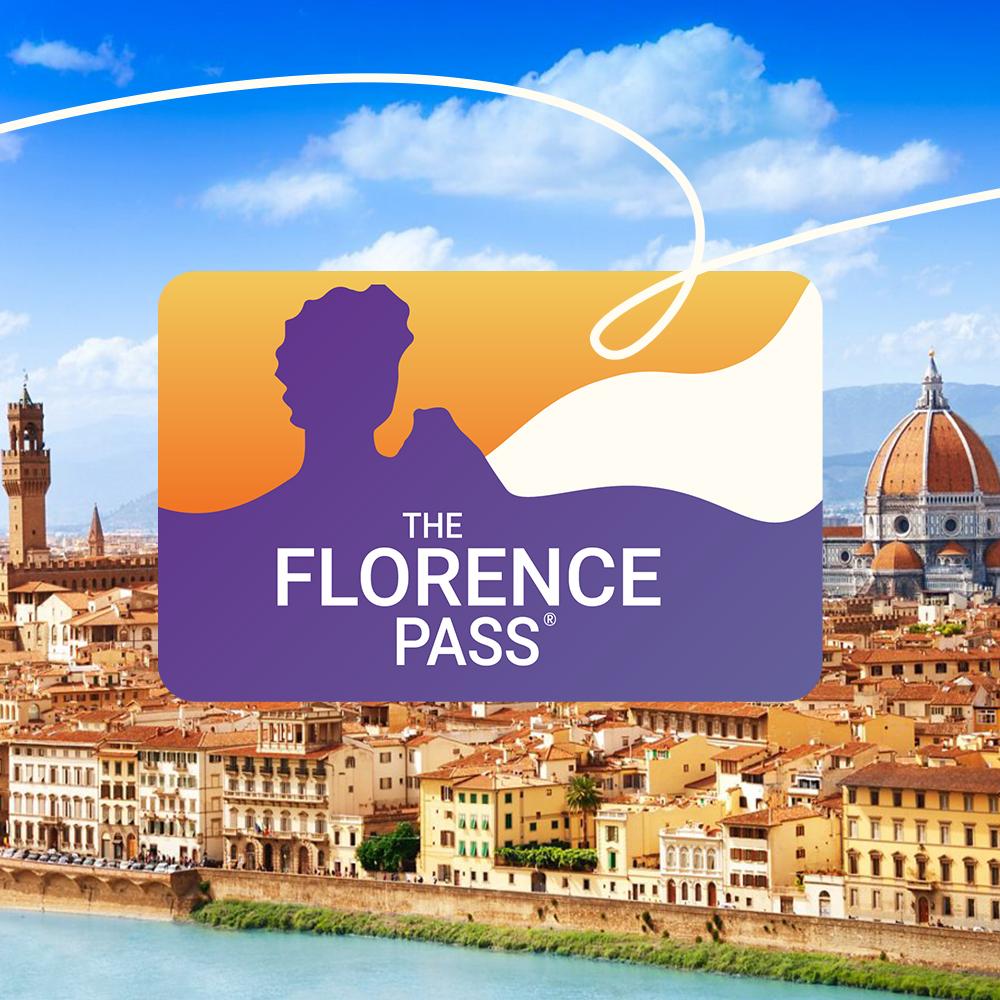
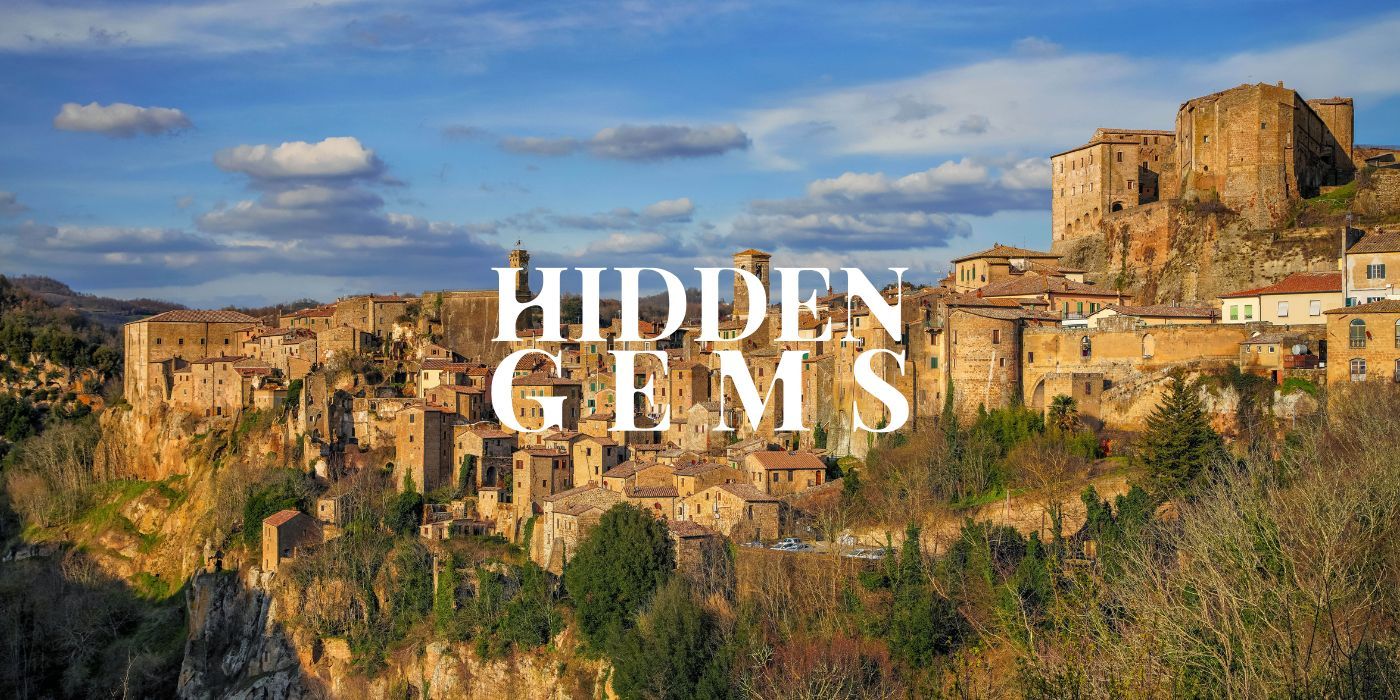
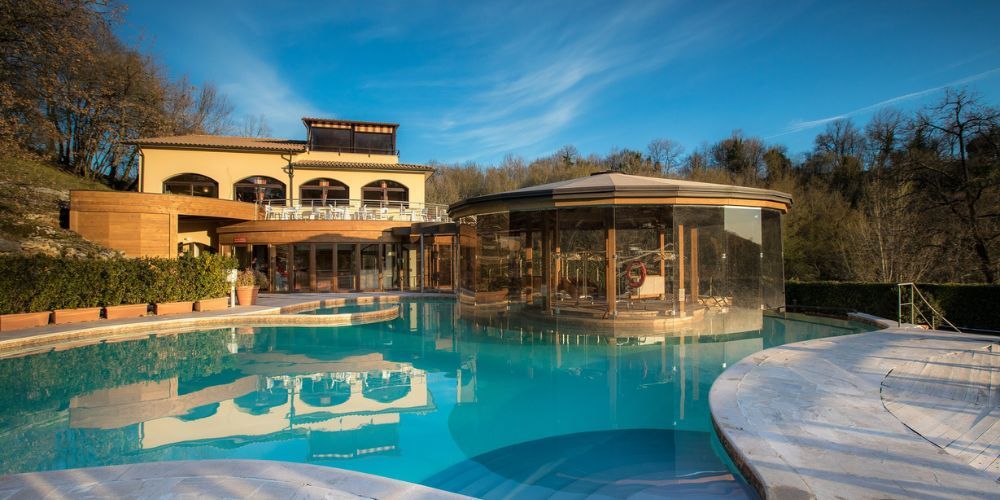
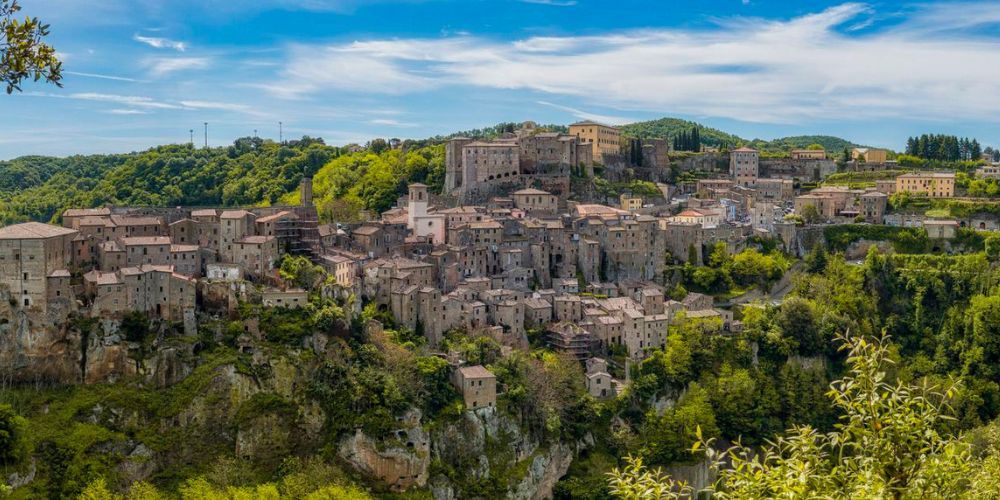
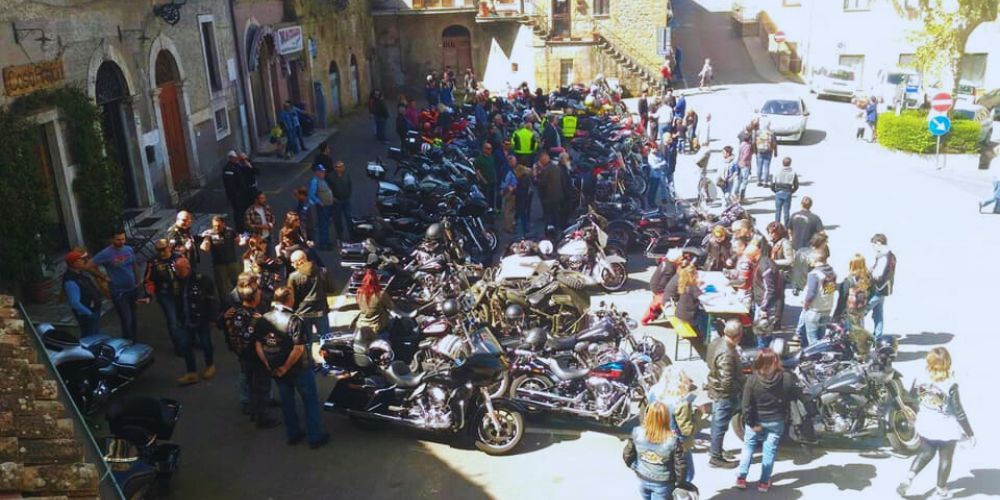

Ilaria Capatti
Discovering Sorano, an ancient Etruscan hamlet carved out of tuff. History, archaeology and nature: an open-air museum.